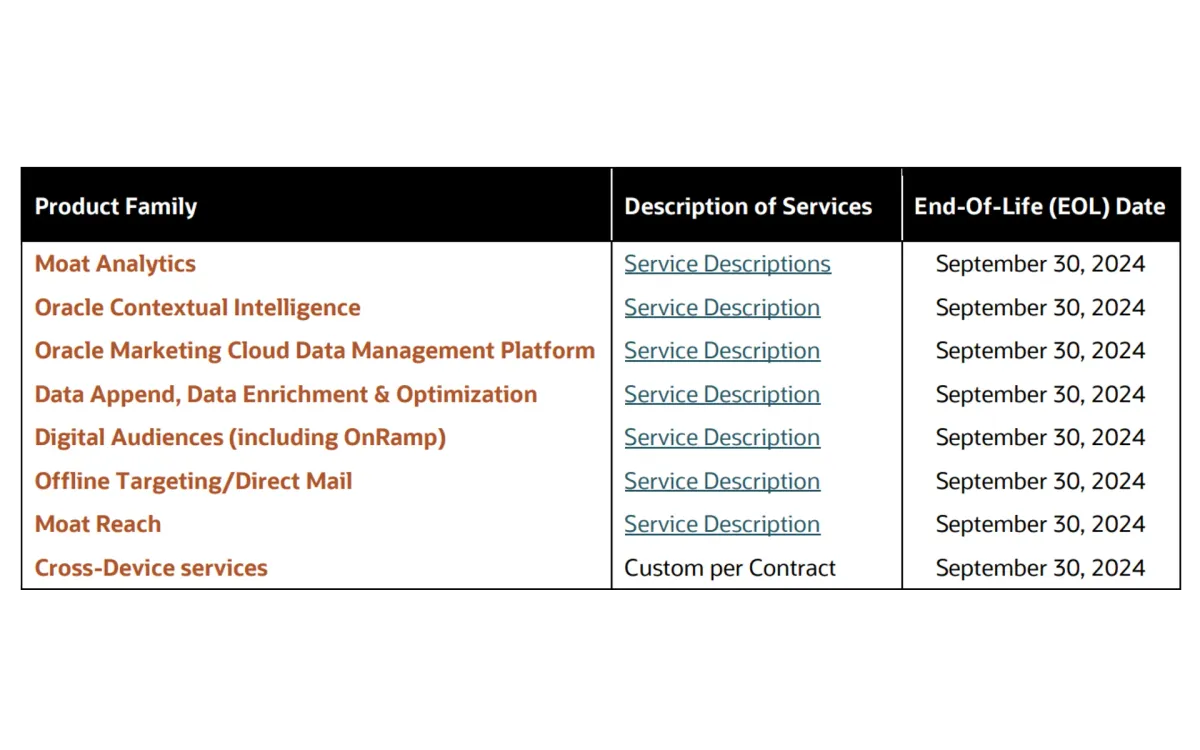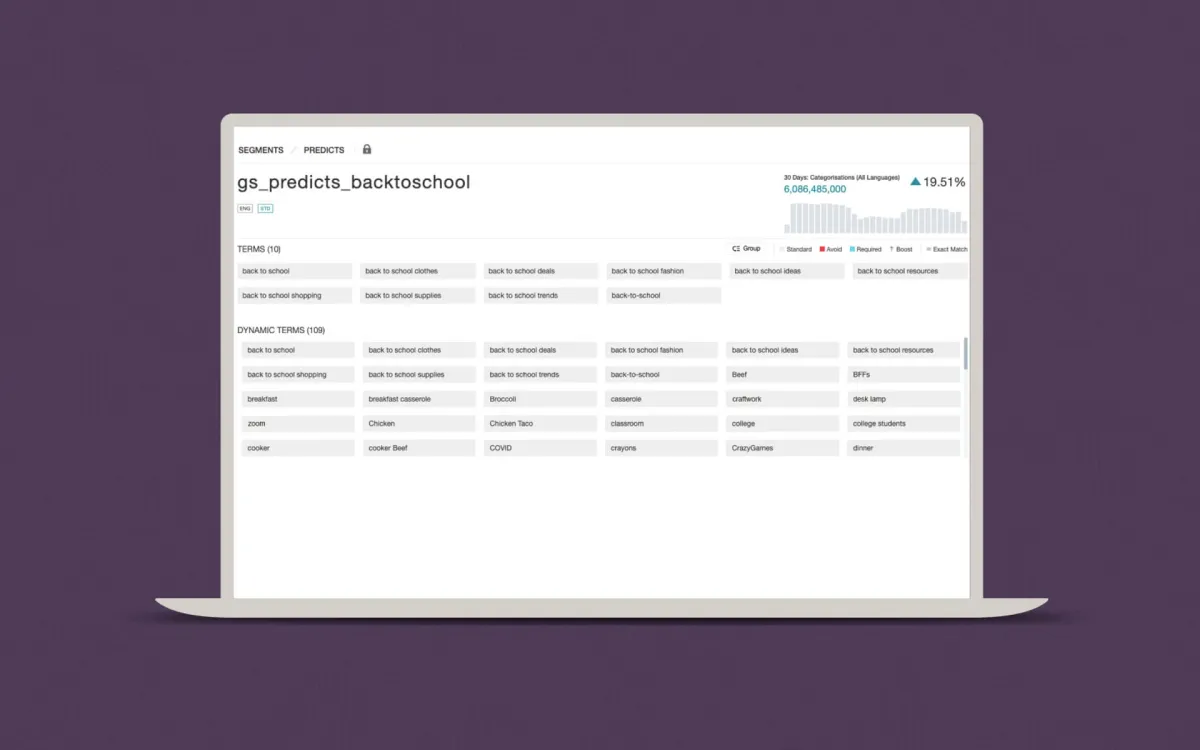Oracle Audiences to Sunset in Display & Video 360: Key Changes Ahead
Google's Display & Video 360 to remove Oracle audiences and introduce new features for enhanced advertising efficiency.

Google yesterday announced changes to its Display & Video 360 platform, set to take effect over the next few weeks. These updates, which include the sunsetting of Oracle audiences and the introduction of new features, aim to streamline advertising processes and improve inventory access for marketers. The announcement, made through Google's official Display & Video 360 blog, outlines three major changes that will impact how advertisers target audiences and manage their campaigns.
The most significant change is the sunsetting of Oracle audiences, scheduled for September 30, 2024. This update will remove all third-party audiences licensed from Oracle, including those from providers such as Bluekai, AddThis, and Datalogix. According to the announcement, these audiences will be eliminated from resource targeting and combined audiences within Display & Video 360. This change will have a substantial impact on existing campaigns, as any line items that exclusively target these sunsetting audiences or use them for negative targeting will be automatically paused.
The removal of Oracle audiences extends beyond third-party data. Advertisers will also lose the ability to share first-party CRM audiences that were previously onboarded through BlueKai's Data Management Platform (DMP). This change affects the assignment of these audiences to campaigns, insertion orders, line items, and combined audiences within Display & Video 360. Furthermore, the BlueKai and Datalogix data management platforms will be removed from the self-service mapping dropdown, signaling a complete departure from Oracle's data services within the platform.

This significant shift away from Oracle audiences comes in the context of broader industry changes regarding data privacy and third-party cookies. As digital advertising evolves to address growing privacy concerns, many platforms are moving away from third-party data sources in favor of first-party data and contextual targeting methods. Google's decision to sunset Oracle audiences aligns with this industry-wide trend towards more privacy-centric advertising practices.

The second major update involves enhancing access to premium inventory by transitioning away from Bidswitch for select sub-exchange partners. Display & Video 360 will automatically migrate all entities currently targeting inventory via the Bidswitch sub-exchange option to direct integrations with specific exchanges. These exchanges include Kargo, Media.net, Sharethrough, Nexxen (formerly known as Unruly), and Yieldmo. This change aims to provide advertisers with more direct access to premium inventory, potentially improving the quality and efficiency of ad placements.
The move towards direct integrations with these exchanges could offer several benefits to advertisers. Direct connections often provide more transparency in the bidding process, potentially lower fees, and faster data transfer. This change may also allow for more precise targeting and better inventory quality control. However, advertisers will need to be aware of how this transition might affect their current campaigns and make any necessary adjustments to their targeting strategies.
The third significant update introduces a new feature: insertion order objectives. This addition to Display & Video 360 aims to streamline the process of creating insertion orders and line items by ensuring all components are aligned to achieve the same goal. When creating a new insertion order, advertisers will now select an objective that determines the default Key Performance Indicators (KPIs), line item types, and bid strategies available within that insertion order.
This new workflow is designed to enhance the platform's ability to make AI-powered optimizations and recommendations aligned with the advertiser's ultimate KPI. By aligning all elements of an insertion order with a specific objective, the system can potentially deliver more effective and efficient campaigns. It's worth noting that existing insertion orders will be labeled as "insertion order without objective," and users will have the option to change the objective to "No objective," which makes all KPIs, line item types, and bid strategies available.
The introduction of insertion order objectives represents a shift towards more goal-oriented campaign management within Display & Video 360. This approach could potentially simplify the campaign creation process for advertisers while also leveraging Google's AI capabilities to optimize performance. However, it may require advertisers to rethink their campaign structures and how they define success metrics for their advertising efforts.
These changes to Display & Video 360 reflect the ongoing evolution of digital advertising platforms in response to changing privacy regulations, technological advancements, and advertiser needs. The sunsetting of Oracle audiences, in particular, signals a significant shift in how advertisers will need to approach audience targeting in the future. As third-party data becomes less available, advertisers may need to focus more on first-party data strategies and contextual targeting methods to reach their desired audiences effectively.
The transition to direct integrations with select exchanges and the introduction of insertion order objectives demonstrate Google's efforts to enhance the efficiency and effectiveness of its advertising platform. These changes aim to provide advertisers with better access to quality inventory and more streamlined campaign management tools. However, they also underscore the need for advertisers to stay informed about platform updates and be prepared to adapt their strategies accordingly.
As these changes roll out over the coming weeks, advertisers using Display & Video 360 will need to carefully review their existing campaigns and audience targeting strategies. The automatic pausing of line items that exclusively use Oracle audiences could potentially disrupt ongoing campaigns if not addressed proactively. Similarly, the shift to direct exchange integrations may require adjustments to inventory targeting approaches.
In conclusion, the upcoming changes to Google's Display & Video 360 platform represent a significant shift in digital advertising practices. The sunsetting of Oracle audiences, enhanced access to premium inventory, and the introduction of insertion order objectives will require advertisers to adapt their strategies and potentially explore new approaches to audience targeting and campaign management. As the digital advertising landscape continues to evolve, staying informed about platform changes and being prepared to adjust strategies will be crucial for advertisers looking to maintain effective campaigns.
Key facts from the announcement
Oracle audiences will sunset on September 30, 2024
Third-party audiences from Bluekai, AddThis, and Datalogix will be removed
First-party CRM audiences onboarded by BlueKai's DMP will no longer be available
Direct integrations will replace Bidswitch for select exchanges including Kargo, Media.net, Sharethrough, Nexxen, and Yieldmo
A new insertion order objective feature will be introduced to streamline campaign creation and optimization
Existing insertion orders will be labeled as "insertion order without objective"
These changes will be implemented over the next few weeks following the August 19, 2024 announcement


